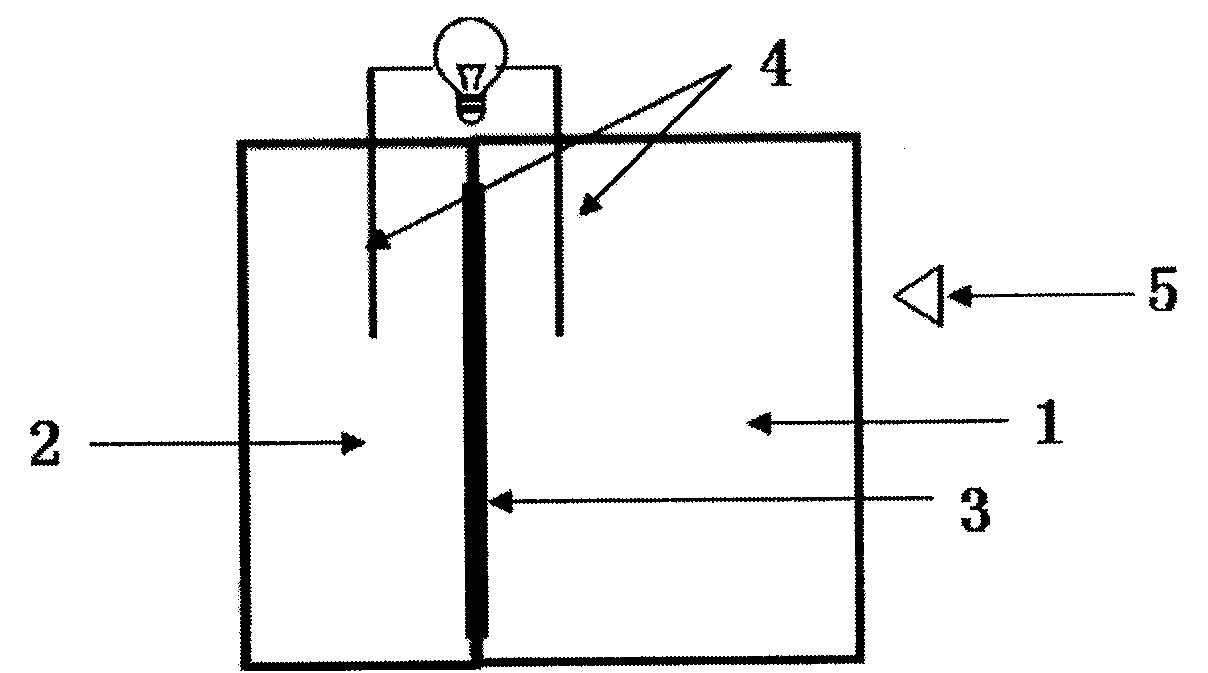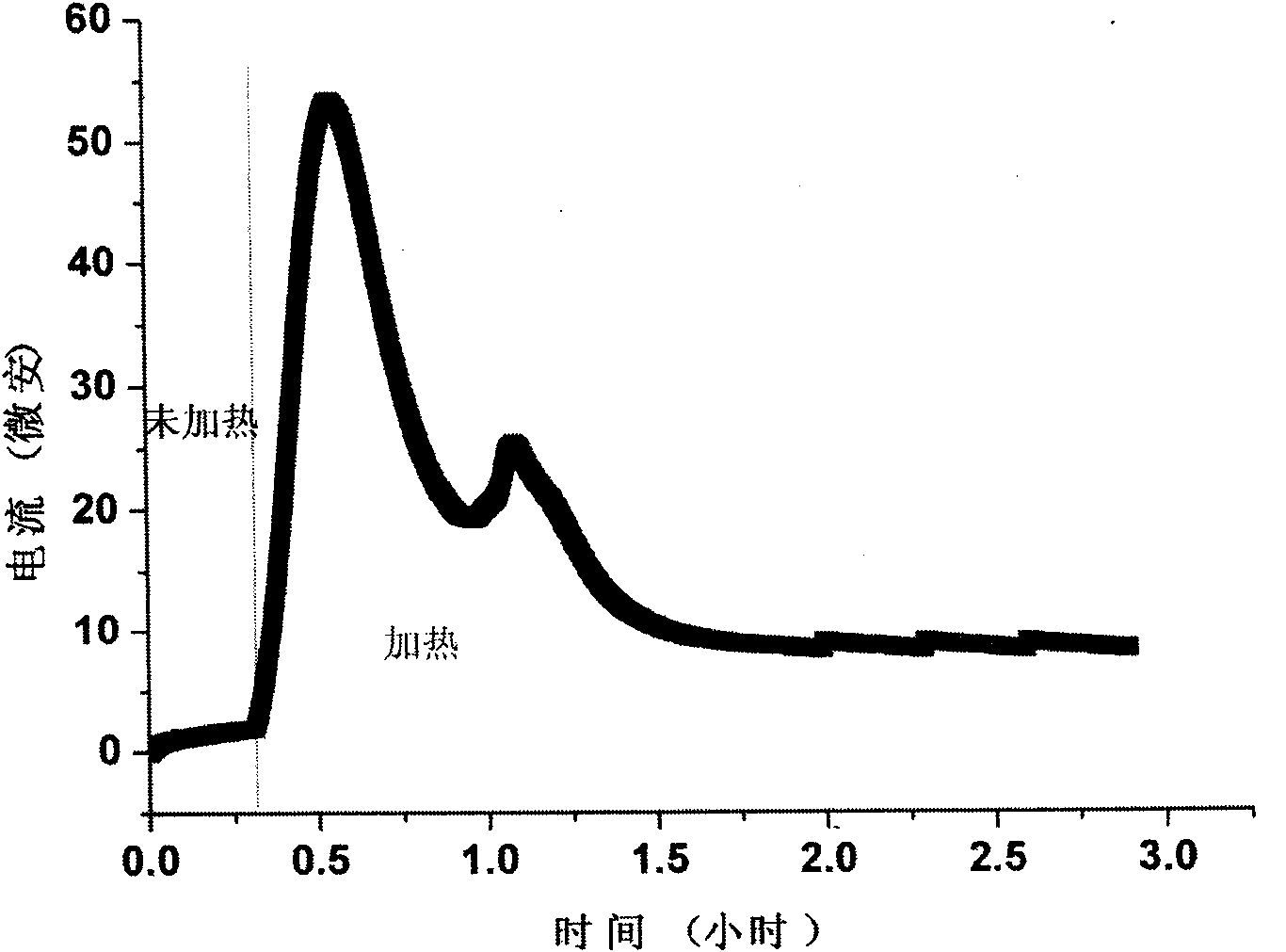Heat energy power generation battery
A thermal power generation and battery technology, applied in the direction of delayed action cells, etc., can solve the problems of secondary pollution of primary energy and environment
- Summary
- Abstract
- Description
- Claims
- Application Information
AI Technical Summary
Problems solved by technology
Method used
Image
Examples
Embodiment 1
[0045] See figure 1 . The thermal power generation battery includes: as an airtight container for an electrolytic cell, which contains -N + (CH 3 ) 3 Oh - Polyethylene anion exchange membrane 3 with strong basic groups, aqueous solution and water containing organic base molecules whose dissociation constant decreases with increasing temperature, platinum electrode 4 and heating device 5 .
[0046] In the airtight container, there are seals connected with the four inner walls of the airtight container containing -N + (CH 3 ) 3 Oh - A polyethylene anion exchange membrane with a strong basic group, and the anion exchange acts as a diaphragm to divide the airtight container into a first container and a second container with unequal volumes, and the volume ratio of the first container to the second container is 1 / 2, the first container is filled with an aqueous solution of organic base molecules, and the second container is filled with pure water.
[0047] A heating devic...
Embodiment 2
[0054] Change the operating temperature of the battery to 1°C, and the temperature of the heating part of the first container to 80°C, so as to reach the maximum temperature difference range described in the present invention.
[0055] Other conditions are as described in Example 1.
[0056]When not heated, after standing at 1° C. for a period of time, as described in Example 1, the ions in the first container and the second container are in a relatively balanced state, and the current value at this time is close to zero. While heating the bottom of the first container to 80°C, the current was measured, and the current gradually increased, reaching a maximum value of 75 microamperes. Keeping the temperature constant, as the heating time increases, the concentration gradient of hydroxide ions gradually decreases and finally reaches a stable value of about 25 microamperes; when the time continues to prolong, the current remains basically unchanged. Principle is the same as desc...
Embodiment 3
[0059] Change the operating temperature of the battery to 2°C, and the temperature of the heating part of the first container to 70°C.
[0060] Other conditions are as described in Example 1.
[0061] When not heated, after standing at 2° C. for a period of time, as described in Example 1, the ions in the first container and the second container are in a relatively balanced state, and the current value at this time is close to zero. While gradually heating the bottom of the first container to 70°C, the current was measured, and the current gradually increased, with a maximum value of 65 microamperes. Keeping the temperature constant, as the heating time increases, the concentration gradient of hydroxide ions gradually decreases and finally reaches a stable value of about 20 microamperes; when the time continues to prolong, the current basically remains unchanged. Principle is the same as described in embodiment 1
[0062] When not heated, the ions in the first container and ...
PUM
 Login to View More
Login to View More Abstract
Description
Claims
Application Information
 Login to View More
Login to View More - R&D
- Intellectual Property
- Life Sciences
- Materials
- Tech Scout
- Unparalleled Data Quality
- Higher Quality Content
- 60% Fewer Hallucinations
Browse by: Latest US Patents, China's latest patents, Technical Efficacy Thesaurus, Application Domain, Technology Topic, Popular Technical Reports.
© 2025 PatSnap. All rights reserved.Legal|Privacy policy|Modern Slavery Act Transparency Statement|Sitemap|About US| Contact US: help@patsnap.com



